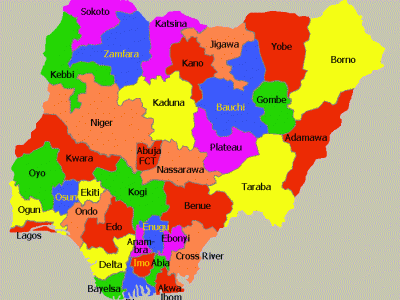
Unic Press UK: Fitch Ratings, Inc., one of the leading credit rating agencies has revised the outlook on Nigeria from stable to negative, citing a GDP growth of -1.5% in 2016, estimated limited economic recovery in 2017 with growth forecast of 1.5%, foreign exchange restriction and tight foreign currency liquidity, wide gap between the official rate and the parallel market rates, worsening asset quality in the banking sector, inflation rate of 18.55% in December 2016.
Long-term Foreign and Local Currency Issuer Default Ratings (IDRs) was downgraded to Negative from Stable. The IDRs is now at ‘B+’, and the issue ratings on Nigeria’s senior unsecured foreign currency bonds is affirmed at ‘B+’, said Fitch.
Fitch said the primary factors that could lead to a downgrade are:
- Failure to secure an improvement in economic growth, for example caused by continued tight FX liquidity.
- Failure to narrow the fiscal deficit leading to a marked increase in public debt.
- A loss of foreign exchange reserves that increases vulnerability to external shocks.
- Worsening of political and security environment that reduces oil production for a prolonged period or worsens ethnic or sectarian tensions.
Though the rating firm do not anticipate events that have a material likelihood to cause an upgrade soon, it prescribed the factors that could lead to a positive outlook as:
- A revival of economic growth supported by the sustained implementation of coherent macroeconomic policies.
- A reduction of the fiscal deficit and the maintenance of a manageable debt burden.
- Increase in foreign exchange reserves to a level that reduces vulnerability to external shocks.
- Successful implementation of economic or structural reforms, for instance raising non-oil revenues, increasing the execution of capital expenditures and passing the PIB.
Fitch’s Credit Rating Scales
AAA (Highest credit quality): ‘AAA’ ratings denote the lowest expectation of default risk. They are assigned only in cases of exceptionally strong capacity for payment of financial commitments. This capacity is highly unlikely to be adversely affected by foreseeable events.
AA (Very high credit quality): ‘AA’ ratings denote expectations of very low default risk. They indicate very strong capacity for payment of financial commitments. This capacity is not significantly vulnerable to foreseeable events.
A (High credit quality): ‘A’ ratings denote expectations of low default risk. The capacity for payment of financial commitments is considered strong. This capacity may, nevertheless, be more vulnerable to adverse business or economic conditions than is the case for higher ratings.
BBB (Good credit quality): ‘BBB’ ratings indicate that expectations of default risk are currently low. The capacity for payment of financial commitments is considered adequate but adverse business or economic conditions are more likely to impair this capacity.
BB (Speculative): ‘BB’ ratings indicate an elevated vulnerability to default risk, particularly in the event of adverse changes in business or economic conditions over time; however, business or financial flexibility exists which supports the servicing of financial commitments.
B (Highly speculative): ‘B’ ratings indicate that material default risk is present, but a limited margin of safety remains. Financial commitments are currently being met; however, capacity for continued payment is vulnerable to deterioration in the business and economic environment.
CCC (Substantial credit risk): Default is a real possibility.
CC (Very high levels of credit risk): Default of some kind appears probable.
C (Exceptionally high levels of credit risk): Default is imminent or inevitable, or the issuer is in standstill. Conditions that are indicative of a ‘C’ category rating for an issuer include:



